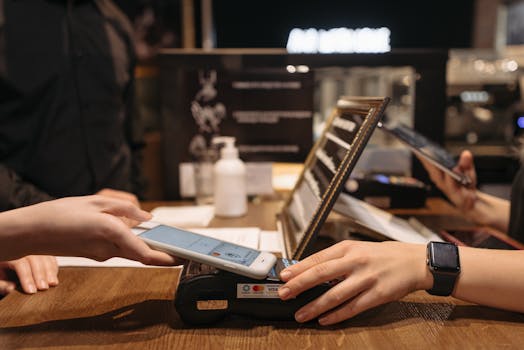
**
Alipay Tap: Revolutionizing Offline Payments in China with Seamless NFC Technology
China's mobile payment landscape is constantly evolving, and Alipay, a dominant force in the market, continues to innovate. Its latest offering, Alipay Tap, is poised to redefine offline payments through its enhanced Near Field Communication (NFC) experience. This new technology promises faster, more secure, and ultimately, a more convenient payment method for consumers and businesses alike, solidifying China's position as a global leader in cashless transactions. This article delves into the features, implications, and overall impact of Alipay Tap on the Chinese payment ecosystem.
What is Alipay Tap and How Does it Work?
Alipay Tap leverages NFC technology, allowing users to make payments by simply tapping their smartphones or other NFC-enabled devices against a payment terminal. This eliminates the need for cumbersome QR code scanning, which has been the mainstay of Alipay's previous offline payment system. The process is remarkably streamlined:
- User Initiates Payment: The user selects Alipay Tap as their payment method within the Alipay app.
- Device Taps Terminal: The user's NFC-enabled device is tapped against the merchant's Alipay Tap-enabled terminal.
- Payment Confirmation: The payment is processed almost instantaneously, with a confirmation notification sent to the user.
This seemingly small change represents a significant leap forward in user experience, promising a speedier and more intuitive payment process compared to traditional QR code scanning. The shift towards NFC technology is a clear indication of Alipay’s commitment to staying at the forefront of mobile payment innovation. This also highlights the increasing adoption of contactless payments worldwide, reflecting a broader global trend.
Advantages of Alipay Tap over Traditional QR Code Payments
While QR code payments have been revolutionary, Alipay Tap offers several key advantages:
- Increased Speed: Tap-and-go transactions are significantly faster than scanning QR codes, particularly beneficial in busy environments.
- Enhanced Security: NFC technology offers a more secure payment method, minimizing the risk of fraud compared to the potential vulnerabilities of QR code scanning. Furthermore, it is easier to implement robust security protocols with NFC.
- Improved User Experience: The intuitive nature of tapping a device makes the payment process more user-friendly, appealing to a wider range of consumers.
- Better Offline Functionality: While QR codes require internet connectivity for the initial scan, NFC payments can often function more reliably in areas with weak or no internet connection, enhancing accessibility for users in more rural locations.
- Accessibility for the Elderly: The simpler tap-and-go method is more accessible to the older generation less familiar with QR code technology.
These improvements collectively contribute to a more seamless and frictionless payment experience, further driving the adoption of digital payments in China.
Alipay Tap's Impact on Businesses and the Chinese Economy
The introduction of Alipay Tap isn't just beneficial for consumers; it also offers significant advantages for businesses:
- Streamlined Operations: Faster transactions mean quicker customer service, leading to improved efficiency and potentially increased sales.
- Reduced Operational Costs: Eliminating the need for extensive QR code management systems can save businesses both time and money.
- Attracting More Customers: The ease and convenience of Alipay Tap makes businesses more attractive to a tech-savvy customer base.
- Data Analytics: Alipay's platform can provide valuable data insights to businesses, enabling them to optimize their operations and strategies.
The widespread adoption of Alipay Tap could significantly boost China's overall economic activity by promoting greater efficiency in retail transactions and streamlining various business processes. This is especially true given the dominance of Alipay in the Chinese market.
Competition and Future Developments in China's Mobile Payment Sector
Alipay's dominance in the Chinese market is undeniable, but it faces competition from other players, most notably WeChat Pay. The introduction of Alipay Tap is likely to trigger a race among payment providers to integrate similar NFC-based solutions, leading to further innovation and enhanced features for consumers. We can expect improvements such as:
- Improved Offline Capabilities: Further enhancements to offline functionality, potentially incorporating features like offline payments in areas with very limited or no connectivity.
- Integration with Wearables: Expanding compatibility with smartwatches and other wearables for even greater convenience.
- Enhanced Security Features: Continuous development of security measures to protect users against fraud.
Conclusion: The Alipay Tap Advantage
Alipay Tap represents a significant advancement in China's mobile payment landscape. By shifting from QR codes to NFC technology, Alipay has not only improved the speed and security of transactions but also significantly enhanced the user experience. This move reflects a broader trend towards contactless payments globally, and Alipay’s successful implementation will likely influence payment systems worldwide. The ongoing competition and innovation within the Chinese mobile payment market promise further advancements, resulting in even more seamless, secure, and convenient payment options for consumers in the years to come. The future of offline payments in China, and potentially globally, looks to be defined by the evolution of technologies such as Alipay Tap. Keywords such as mobile payments China, Alipay NFC, contactless payments, and cashless transactions will continue to be relevant as the technology matures and its adoption grows.




















